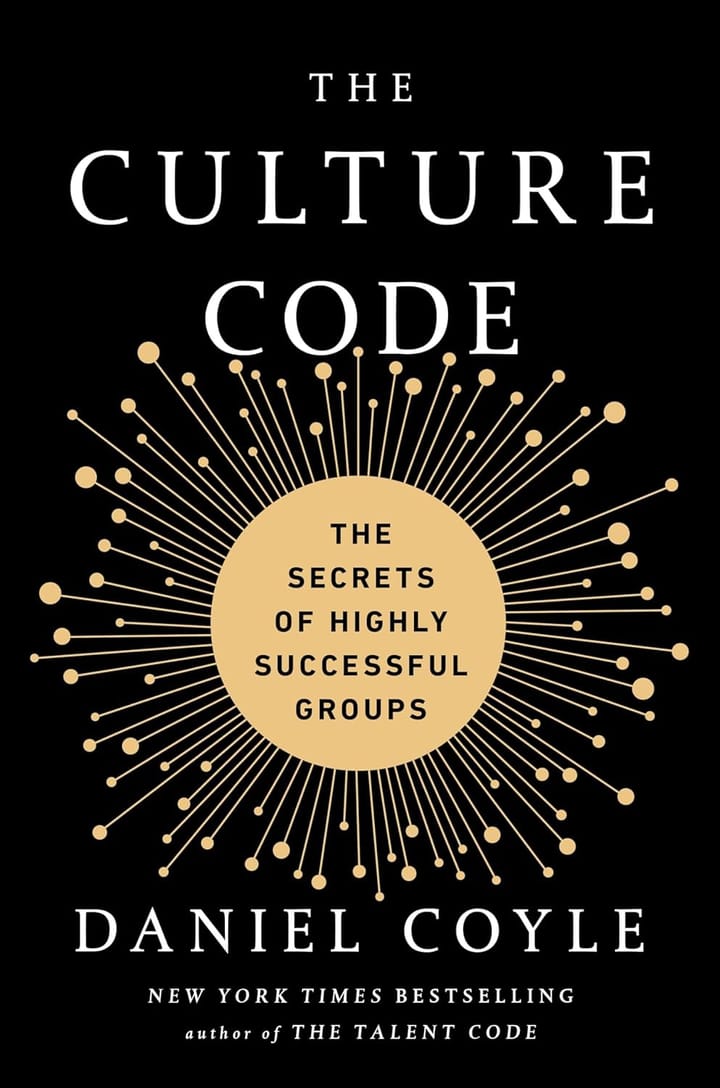Book Summary: The Transparent Leader
Discover key leadership insights from The Transparent Leader by Herb Baum in this informative book summary article. Elevate your leadership skills today!

Essential Insights
- Leadership transparency is essential for building trust and fostering open communication within an organization.
- Herb Baum emphasizes the importance of authenticity, vulnerability, and accountability in transparent leadership.
- Transparency can lead to increased employee engagement, improved decision-making, and a more positive work culture.
Introduction to The Transparent Leader
The Transparent Leader, written by Herb Baum, is a compelling book that explores the essential qualities and attributes of effective leadership in today's modern world. Herb Baum, a seasoned business executive, shares his valuable insights and experiences to provide readers with practical guidance on how to become a more transparent and authentic leader.
For individuals looking to enhance their leadership skills and cultivate a more transparent approach to leading others, The Transparent Leader offers actionable strategies and real-world examples to inspire and empower readers. Through Baum's teachings, readers can discover the importance of honesty, integrity, and openness in leadership, paving the way for improved communication, trust-building, and organizational success.
Buy "The Transparent Leader" on Amazon
Summary of The Transparent Leader
The Transparent Leader emphasizes the importance of openness and honesty in leadership. Herb Baum argues that transparency fosters trust, enhances communication, and creates an environment where both leaders and team members feel valued and empowered. By adopting a transparent approach, leaders can cultivate a positive workplace culture that encourages accountability and collaboration. Through real-life examples and practical strategies, the book encourages leaders to be authentic and approachable, highlighting how these traits can drive organizational success.
One of the unique contributions of the book is its blend of personal experiences and research-backed insights. Baum shares anecdotes from his own leadership journey, illustrating how transparency played a vital role in overcoming challenges. This personal touch makes the lessons relatable and applicable to readers from various backgrounds. Additionally, the book offers actionable steps that leaders can implement immediately, making it a valuable resource for those seeking to enhance their leadership approach. Its focus on emotional intelligence and self-awareness also sets it apart, emphasizing that effective leadership goes beyond just strategic decision-making.
Notable ideas from the book include the significance of vulnerability in leadership and the idea that leaders should actively seek feedback from their teams. Baum highlights that being open about one's challenges and weaknesses can actually strengthen connections within the team. He encourages leaders to create an atmosphere where feedback is welcomed and acted upon, which in turn drives growth and innovation. These concepts not only lay the groundwork for effective leadership but also serve as guiding principles for personal development, ensuring that this journey is both fulfilling and impactful.
Key Lessons From The Transparent Leader
Embracing Transparency
One of the primary lessons from The Transparent Leader is the importance of embracing transparency within leadership practices. Baum argues that leaders who are open about their thoughts, decisions, and the rationale behind them foster a culture of trust. When leaders share their challenges and successes, it not only humanizes their role but also encourages team members to contribute openly as well.
An example from the book highlights a scenario where a CEO shares the company’s financial struggles with employees, rather than concealing them. This decision leads to a collaborative effort among employees to brainstorm solutions, making them feel valued and invested in the organization's success. Baum illustrates that transparency can transform a workplace into a more inclusive and innovative environment.
This lesson inspires readers to recognize transparency as a strategic tool for growth. By dismantling barriers and encouraging open communication, leaders can drive engagement and accountability. This shift not only benefits organizational morale but also sets the stage for innovative problem-solving, primarily because team members feel empowered to share their ideas and insights.
The Power of Vulnerability
Another vital concept presented in The Transparent Leader is the power of vulnerability in leadership. Baum emphasizes that leaders who show vulnerability allow their teams to relate to them on a personal level. When leaders admit their mistakes or uncertainties, it creates an environment where team members feel safe to do the same, breaking down hierarchical barriers.
This notion of vulnerability can challenge traditional views of leadership, often seen as infallible. By embracing this approach, readers may feel encouraged to tap into their authenticity, potentially leading to a more fulfilling and connected workplace. Leaders who practice vulnerability can catalyze a shift toward collaboration and mutual support among team members, ultimately driving better performance and innovation.
Application Ideas for The Transparent Leader
Developing Authentic Communication
One of the key lessons from The Transparent Leader is the importance of authentic communication. To implement this in your daily life, start by actively listening to colleagues and team members. This means giving them your full attention, acknowledging their viewpoints, and responding thoughtfully. When people feel heard, it fosters trust and promotes a more open dialogue, which is essential for effective leadership.
You can also practice transparency by sharing your own experiences, challenges, and insights with your team. This doesn’t mean oversharing personal information, but rather being open about professional struggles and decision-making processes. This vulnerability can break down barriers and encourage others to be more forthcoming in their communication, ultimately enhancing teamwork and collaboration.
To make this practice more effective, set aside regular check-in meetings or open forums where team members can voice their thoughts freely. Create a safe environment where everyone is encouraged to express ideas without fear of judgment. For further enhancement, consider utilizing digital communication tools to maintain discussions outside of formal meetings. Remember, sharing successes along with difficulties can solidify bonds within your team.
Emphasizing Accountability and Responsibility
Another fundamental concept in The Transparent Leader is the focus on accountability. To put this into practice, encourage team members to take ownership of their tasks and decisions. You can implement this by establishing clear roles and responsibilities, ensuring that everyone understands their contributions to the team's goals. When individuals recognize their impact, it heightens their commitment to excellence.
To simplify this process, consider using project management tools that provide visibility into each member’s tasks and deadlines. For example, platforms like Asana or Trello can help streamline collaboration and tracking. By creating a culture of accountability, your team will be more motivated to meet their responsibilities, driving overall performance and trust within the group.
Building Trust Through Transparency
The Transparent Leader highlights the critical connection between transparency and trust. To foster this in your role, make transparency a cornerstone of your leadership style. Start by being open about decision-making processes and the rationale behind them. When team members see that decisions are made transparently, it builds confidence in your leadership and the organization's direction.
Another effective way to cultivate trust is through regular updates about company goals, challenges, and successes. This could take the form of weekly newsletters or town hall meetings, where you share organizational news. By keeping everyone informed, you reinforce a culture of openness and inclusivity, helping to align the team on shared objectives.
To reinforce trust-building efforts, encourage two-way communication, where team members can express concerns or ask questions. Consider implementing an anonymous feedback system to gather honest insights. For instance, using tools like Google Forms can facilitate honest communication while protecting individuals' anonymity. Ultimately, a transparent environment breeds trust, fostering stronger relationships and collaboration across the team.
Leading with Empathy and Understanding
Empathy is a central tenet in The Transparent Leader, and it can be cultivated by actively demonstrating understanding towards team members. To integrate this into your leadership approach, take time to check in on individuals, ask about their well-being, and listen to their concerns. Understanding the personal experiences and challenges your team faces can enhance morale and build loyalty.
To further establish empathy in your leadership style, consider instituting policies or practices that acknowledge work-life balance, such as flexible work hours or mental health days. Demonstrating that you value team members’ personal lives and well-being fosters a supportive atmosphere. This enhances employee satisfaction and engagement, which in turn drives productivity and commitment to the company’s mission.
To streamline this process, set aside regular "empathy hours" where you or members of the leadership team are available for informal conversations, emphasizing approachability. Create shared initiatives, such as volunteer days or team-building activities that encourage personal connections. Real-life examples of organizations that prioritize empathy show lower turnover rates and higher employee satisfaction, proving the effectiveness of these practices.
Encouraging Continuous Learning and Development
Continuous learning is emphasized in The Transparent Leader, and creating a culture of development can significantly enhance your team's growth. Start by encouraging team members to pursue professional development opportunities, whether through workshops, online courses, or attending conferences. By providing resources or tuition reimbursement, you demonstrate your commitment to their growth.
Another practical approach is to create a mentorship program within the organization. Pairing less experienced employees with seasoned professionals can facilitate knowledge sharing and foster meaningful relationships. This not only accelerates learning but also strengthens team cohesion, as individuals collaborate towards common goals.
To facilitate ongoing development, dedicate time during meetings to share learnings or collectively brainstorm new ideas. Implementing “lunch and learn” sessions can make this engaging and inclusive. Realizing a commitment to learning makes individuals feel valued and boosts overall morale, leading to improved performance and creativity within the team.
Concluding Thoughts
The Transparent Leader by Herb Baum is a compelling exploration of how transparency, vulnerability, and accountability can reshape leadership practices. The book emphasizes the vital role of openness and honesty in building trust, enhancing communication, and creating an empowering workplace culture where team members feel valued. Through relatable anecdotes and practical advice, Baum illustrates how adopting a transparent leadership style can lead to greater organizational success.
Key themes throughout the article include the importance of authentic communication, the power of vulnerability, and the necessity of inclusive dialogue. These concepts highlight how leaders can cultivate an environment that encourages accountability, innovative problem-solving, and continuous improvement. Baum’s insights into consistency and empathy serve as guiding principles for both personal and professional development, paving the way for stronger connections and enhanced team performance. The actionable strategies outlined in the book empower leaders to implement these lessons in their daily practices.
Emphasizing regular check-ins, open forums for feedback, and fostering a culture of empathy, Baum provides readers with practical tools to engage their teams meaningfully. By practicing these approaches, leaders can not only inspire their teams but also contribute to a collaborative and high-performing workplace. Readers are encouraged to explore The Transparent Leader further to fully grasp the invaluable lessons within its pages. Those looking to enhance their leadership skills will find Baum’s insights both practical and inspiring. By applying the lessons of transparency, vulnerability, and accountability in their own lives, leaders can shift their organizational culture towards one of trust, collaboration, and success. Let this be an invitation for you to take the next step in your leadership journey. Embrace the principles of transparency and authenticity, and watch as they inspire not only personal growth but also the collective achievement of your team. Choose today to lead with openness, empathy, and a commitment to continuous learning, setting the stage for a brighter future for everyone involved.
Related Topics
- Transparent Leadership in Business: Exploring how the concepts of transparency and authenticity can impact leadership within a business setting.
- Effective Communication: The importance of clear and open communication in leadership roles.
- Building Trust: Strategies for building trust with employees and colleagues through transparency and honesty.
- Leadership Style and Philosophy: Examining different leadership styles and philosophies and how they align with transparent leadership practices.
- Employee Engagement: The role of transparency in promoting employee engagement and motivation within an organization.
Reflection & Discussion Questions
Reflection is a powerful tool for personal growth and leadership development. Whether you're exploring your own experiences or engaging in thoughtful group discussion or team training, reflection questions help uncover new insights, clarify values, and inspire meaningful action. Below are questions designed to deepen your understanding of the concepts taught in The Transparent Leader, and facilitate constructive conversations with your team or group.
- How can embracing transparency within leadership practices foster a culture of trust and openness?
- What role does vulnerability play in creating connections and fostering resilience within a team?
- How can leaders build trust through consistency in actions and communication?
- Why is inclusive communication essential for promoting employee satisfaction and driving innovation?
- What impact does authentic communication have on trust and collaboration within a team?
- How can leaders emphasize accountability and responsibility within their teams?
- Why is transparency important in building trust within an organization?
- How can leaders demonstrate empathy and understanding towards their team members?
- What strategies can leaders implement to encourage continuous learning and development within their teams?
- How can leaders create a more positive workplace culture by being authentic and approachable?
Recommended Reading
Below are a few recommended books related to concepts taught in The Transparent Leader.
- Leaders Eat Last by Simon Sinek. A guide to creating a work culture where leaders prioritize the well-being of their team members.
- The 7 Habits of Highly Effective People by Stephen R. Covey. A bestselling self-help book that offers a holistic approach to personal and professional effectiveness.
- Dare to Lead by Brené Brown. A book that explores the importance of vulnerability and courage in leadership roles.
Frequently Asked Questions
What does it mean to be a transparent leader?
Being a transparent leader means being open, honest, and authentic in all of your interactions as a leader. It involves actively sharing information, being vulnerable, and promoting a culture of trust within your team. Transparency allows for collaboration, innovation, and stronger relationships between leaders and their team members. Transparency also leads to increased accountability and overall success within an organization.
What are the key principles of transparent leadership?
Transparent leadership is based on honesty, clarity, and open communication. Leaders who practice transparency are willing to admit mistakes, share information with their teams, and actively listen to feedback. By being transparent, leaders can build trust and foster a culture of collaboration within their organizations.
What are some common pitfalls to avoid when transitioning to transparent leadership?
Some common pitfalls to avoid when transitioning to transparent leadership include being too transparent too soon, failing to set clear expectations for transparency, and neglecting to provide proper context for transparent decisions. It is important to strike a balance between being open and honest while still maintaining boundaries and privacy. Communication is key in transparent leadership, so make sure to keep your team informed and engaged throughout the process. Remember, transparency is a journey, not a destination, so be patient and consistent in your efforts.
What are some practical strategies for leaders to become more transparent in their communication?
Some practical strategies for leaders to become more transparent in their communication include actively listening to employees, being open to feedback, sharing information about decision-making processes, and being honest about successes and failures. It is important for leaders to build trust with their team by being upfront and transparent in their communication. Transparency can result in increased employee engagement, improved collaboration, and a stronger organizational culture.
Buy "The Transparent Leader" on Amazon
Affiliate Disclaimer
Some of the links on this website may be affiliate links. This means that, at no additional cost to you, we may earn a commission if you click through and make a purchase. Your support through these affiliate links helps sustain and improve the quality of the content we provide.



